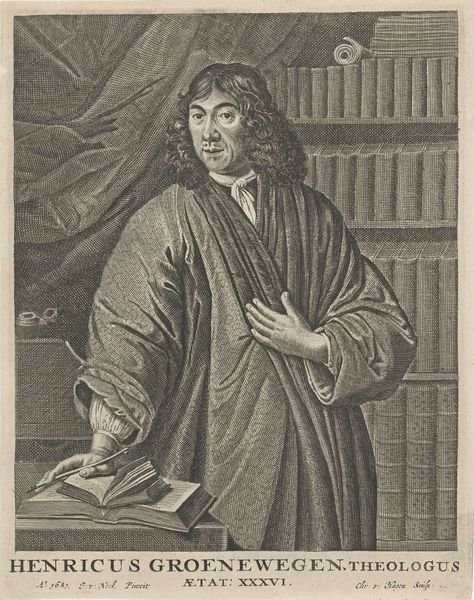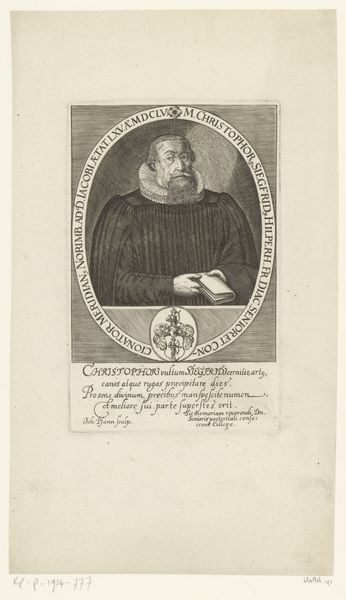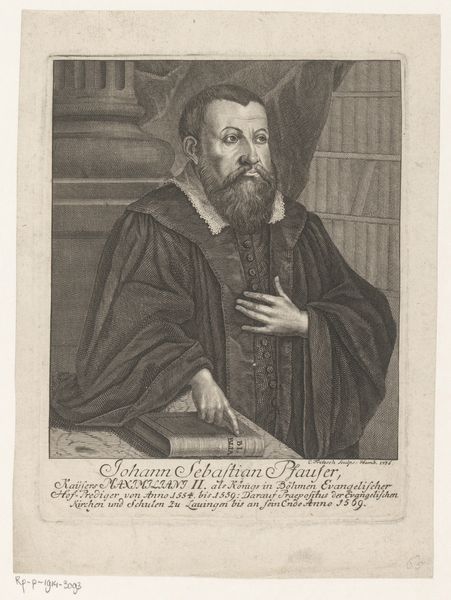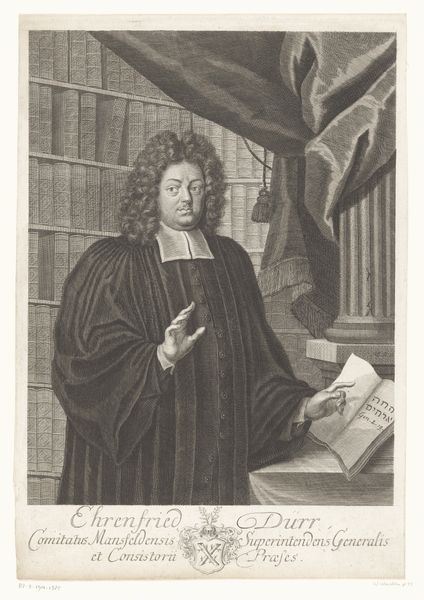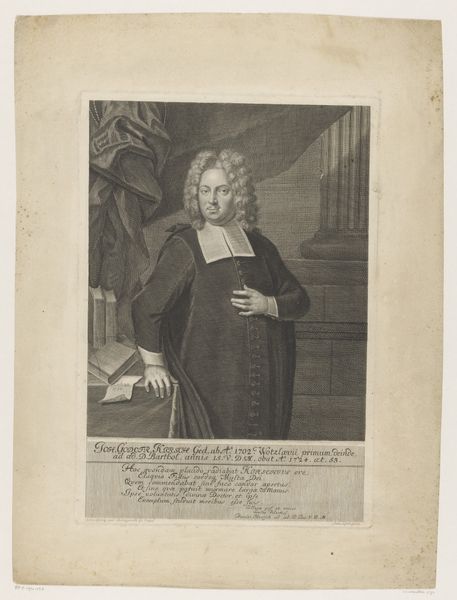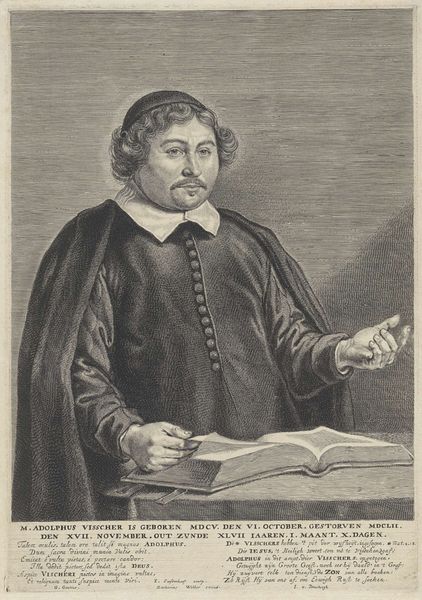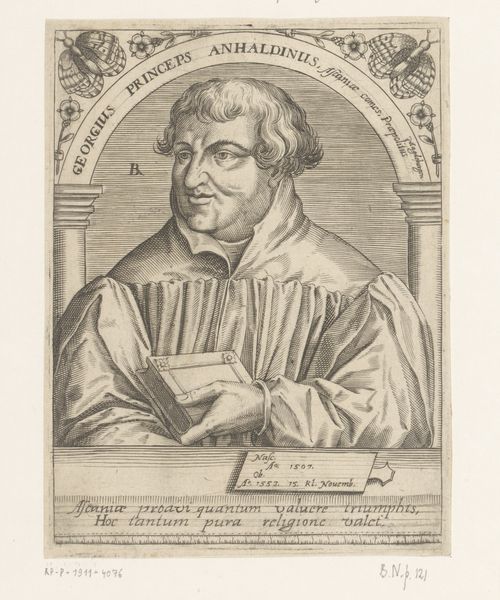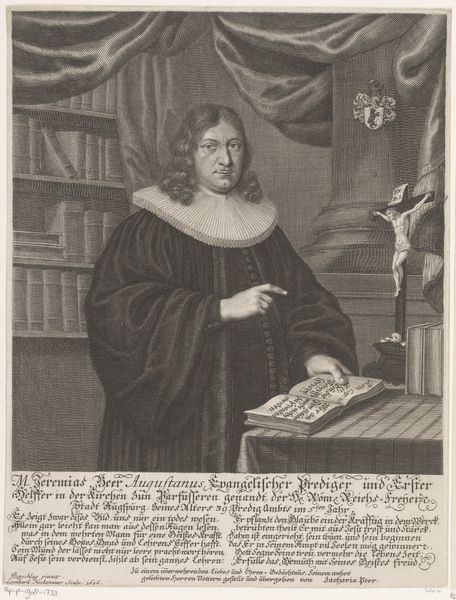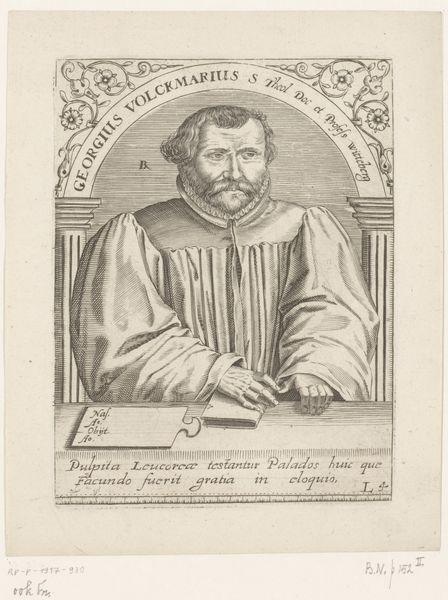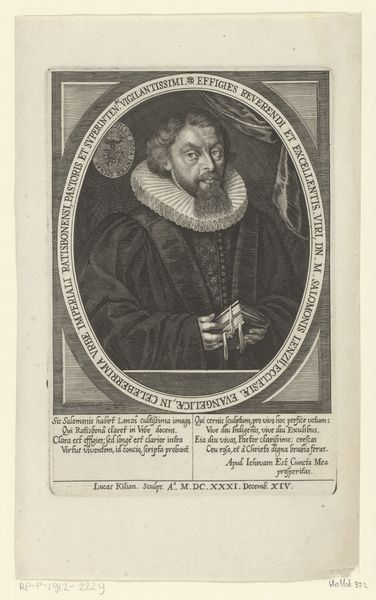
print, engraving
#
portrait
#
baroque
# print
#
old engraving style
#
historical photography
#
portrait reference
#
history-painting
#
engraving
Dimensions: height 461 mm, width 366 mm
Copyright: Rijks Museum: Open Domain
Curator: This print depicts Fulgentius Stevins, a priest of the Order of Saint Augustine. The engraving, made sometime between 1709 and 1726, offers a formal portrayal of a religious figure. Editor: My initial impression is one of austerity. The somber tones and the subject’s direct gaze create a sense of serious reflection. It’s striking how the linear precision of the engraving emphasizes the geometric folds of his robes. Curator: Absolutely. Engravings like this were critical in disseminating images and ideals during the Baroque period. Consider the strategic placement of the crucifix in the background; it is a potent symbol designed to reinforce Stevins' piety and the authority of the church. Editor: I’m drawn to how the light falls, defining the volume of the figure yet keeping him visually tethered to that cruciform symbol in the background. How would you interpret the compositional decision to show him holding the book? Curator: Holding a book during this era would signify Stevins’ scholarship, intellectual pursuits, and dedication to religious doctrine. Its very presence speaks to his role within the community and his connection to a larger theological discourse. The level of detail within that small area draws your eyes and suggests it has profound importance. Editor: Agreed. The visual textures are also worth considering, notably in the way the artist captures the heavy fabric of his habit compared to the more polished surfaces of the altar in the background. Curator: And the text beneath, which gives vital biographical details... it is crucial for situating him within his specific time and place. Without this text, it is fair to argue we miss key elements of what made this portrayal significant. Editor: So it’s not just an image but a historical document in and of itself, helping us trace evolving notions of power and piety in the early 18th century. This exercise in form and symbol provides insight into the era’s ideals. Curator: Exactly. And seeing the work, its interplay of subject, setting, and inscription now allows for more appreciation of how imagery functioned back then.
Comments
No comments
Be the first to comment and join the conversation on the ultimate creative platform.

